Inside the Ukrainian makeshift hospitals near the front line
Army medics are fighting to save Ukrainian lives in a temporary hospital as bombs and gunfire rain down

Your support helps us to tell the story
From reproductive rights to climate change to Big Tech, The Independent is on the ground when the story is developing. Whether it's investigating the financials of Elon Musk's pro-Trump PAC or producing our latest documentary, 'The A Word', which shines a light on the American women fighting for reproductive rights, we know how important it is to parse out the facts from the messaging.
At such a critical moment in US history, we need reporters on the ground. Your donation allows us to keep sending journalists to speak to both sides of the story.
The Independent is trusted by Americans across the entire political spectrum. And unlike many other quality news outlets, we choose not to lock Americans out of our reporting and analysis with paywalls. We believe quality journalism should be available to everyone, paid for by those who can afford it.
Your support makes all the difference.In a dingy medical outpost near eastern Ukraine’s front lines, army medic Viktor battles to save lives on a daily basis.
Nearly a year into Russia’s invasion, fighting now amounts to attritional duels of artillery and infantry assaults, with neither side making significant gains.
The costs of that deadly grind are clear to Viktor’s team of seven medics and six nurses as it toils away, hemmed in by racks of medical supplies and portable heaters, at this “stabilisation point” in the Donetsk region, where battles are fierce.
“The wounded are brought here, we provide treatment, stabilise them and restore vital functions, and send (them) to the next stage of evacuation – to hospitals,” said Viktor, who declined to give his full name.
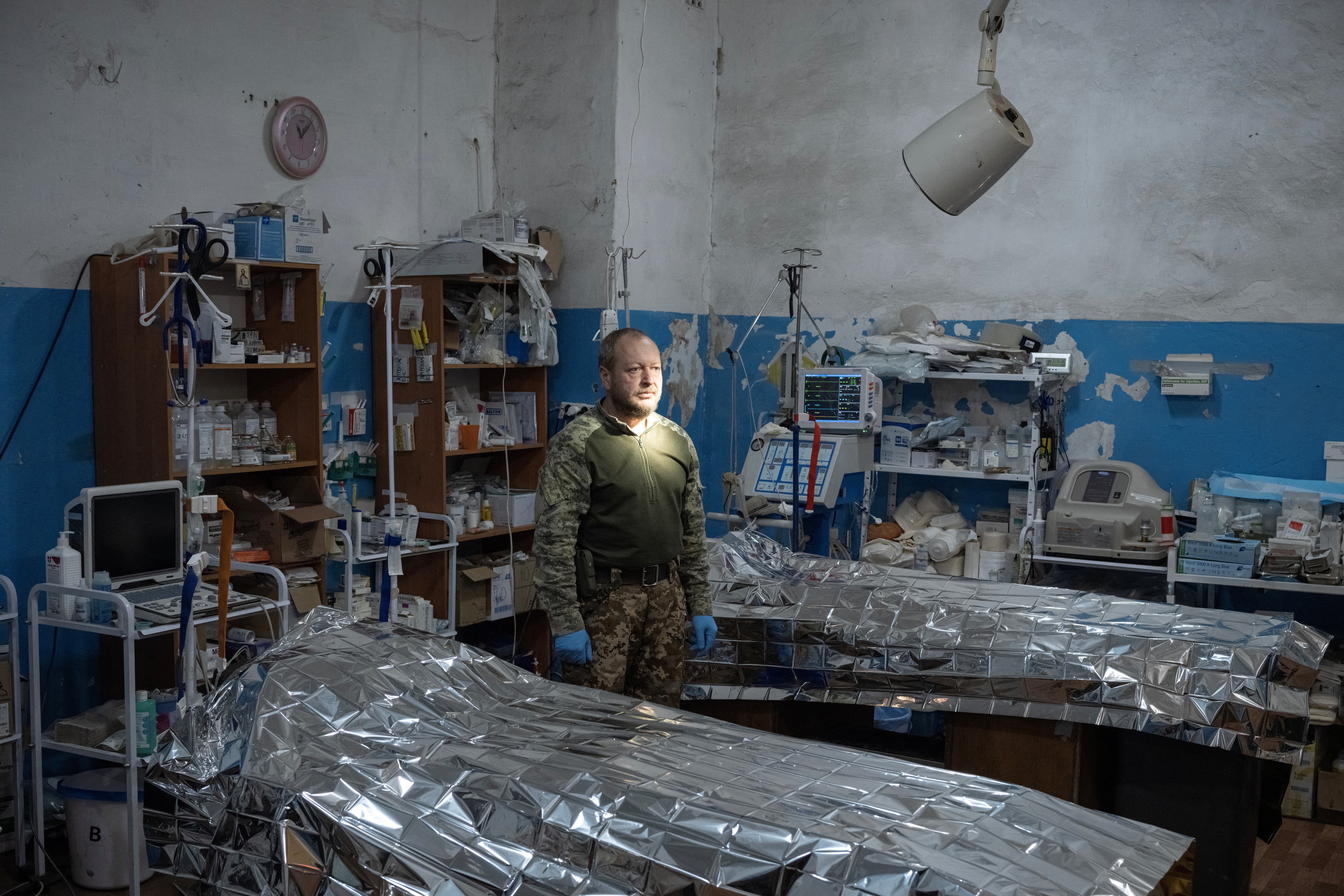
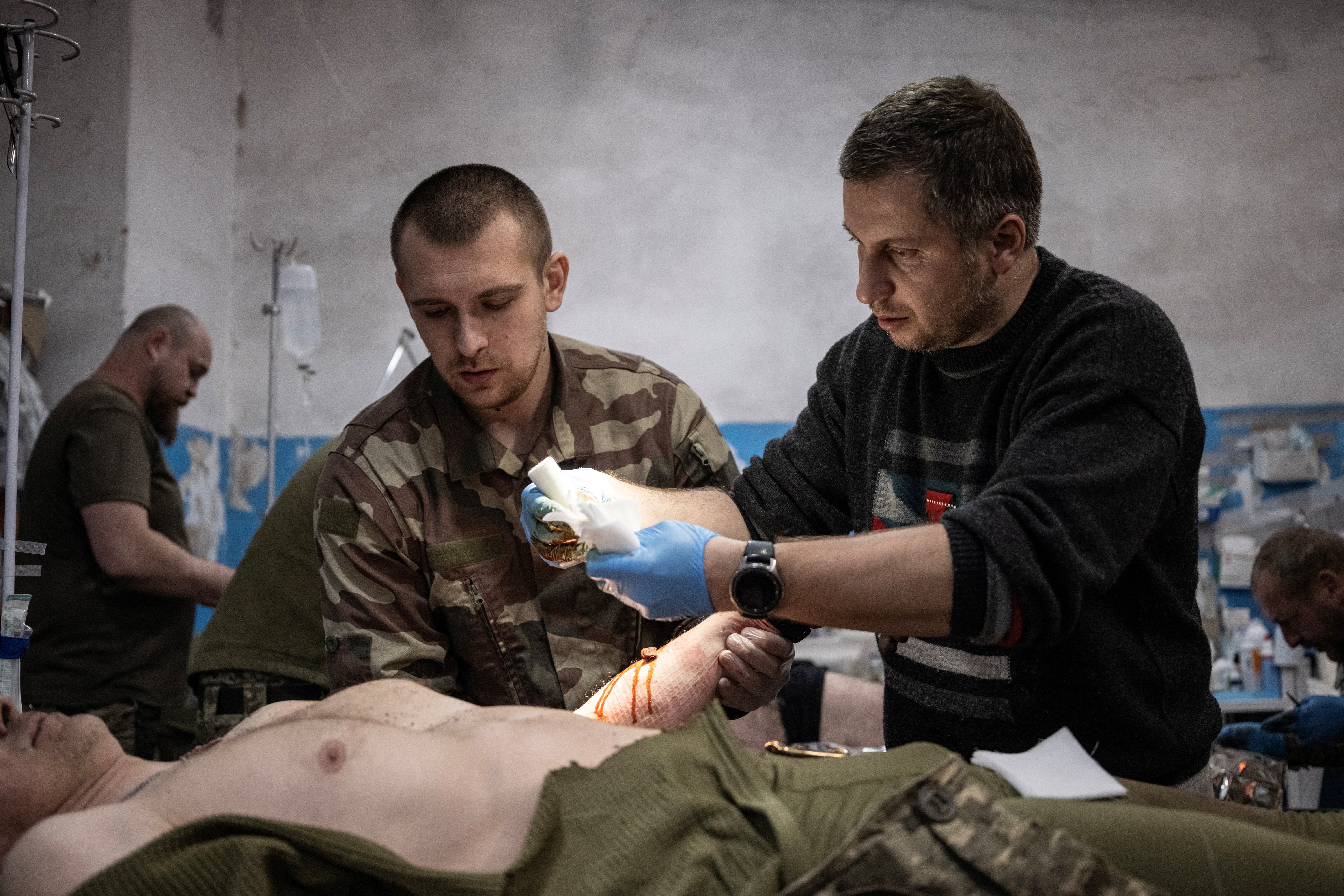
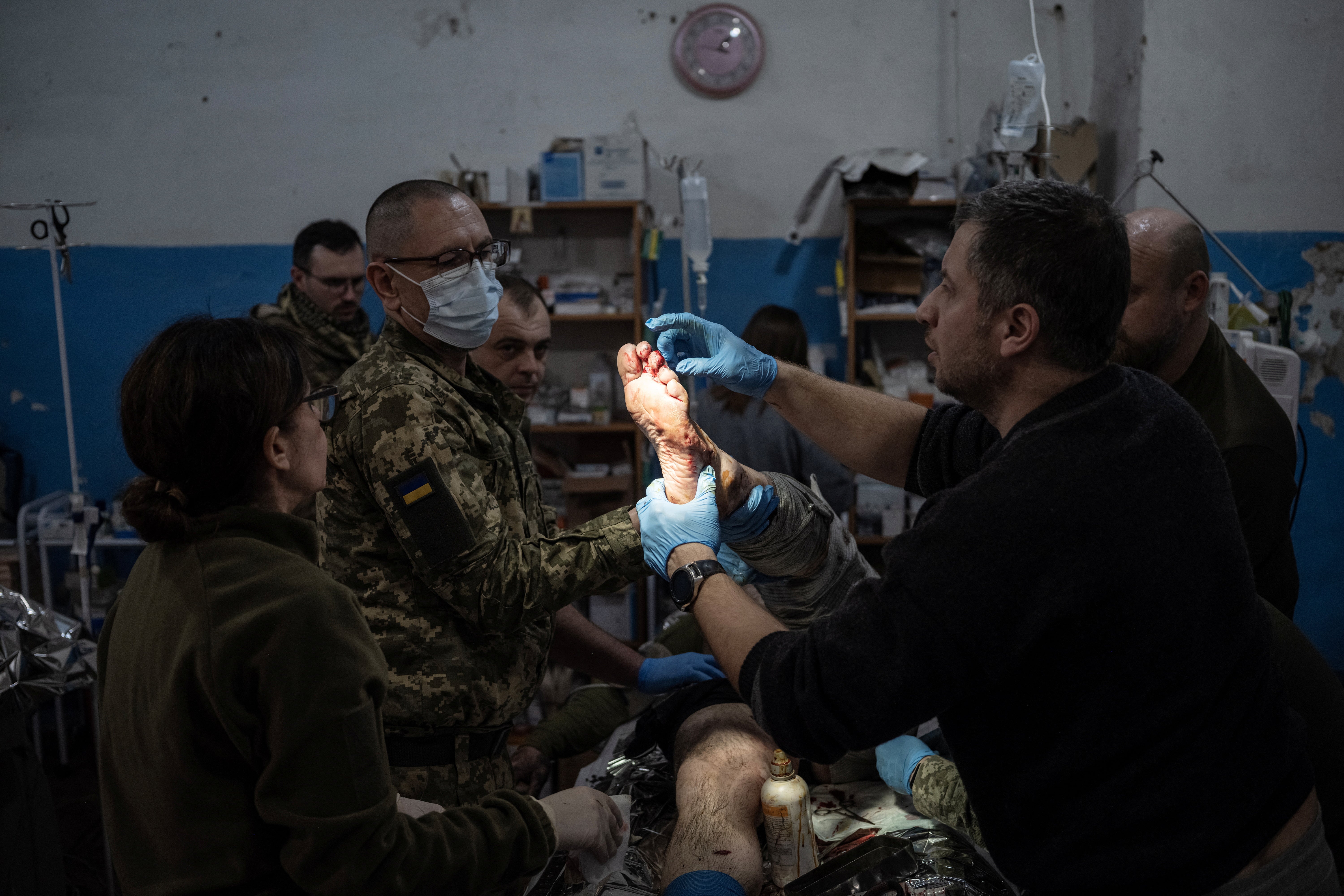
Describing the feeling of being unable to save a life, Viktor, a gynaecologist before the war, said: “It’s the worst thing you can imagine.”
The number of patients brought in – up to 25 per day – has risen sharply over the past two weeks, he said, the vast majority wounded by shrapnel.
But bullet wounds are becoming more frequent, a sign that fighting is increasingly at close quarters.
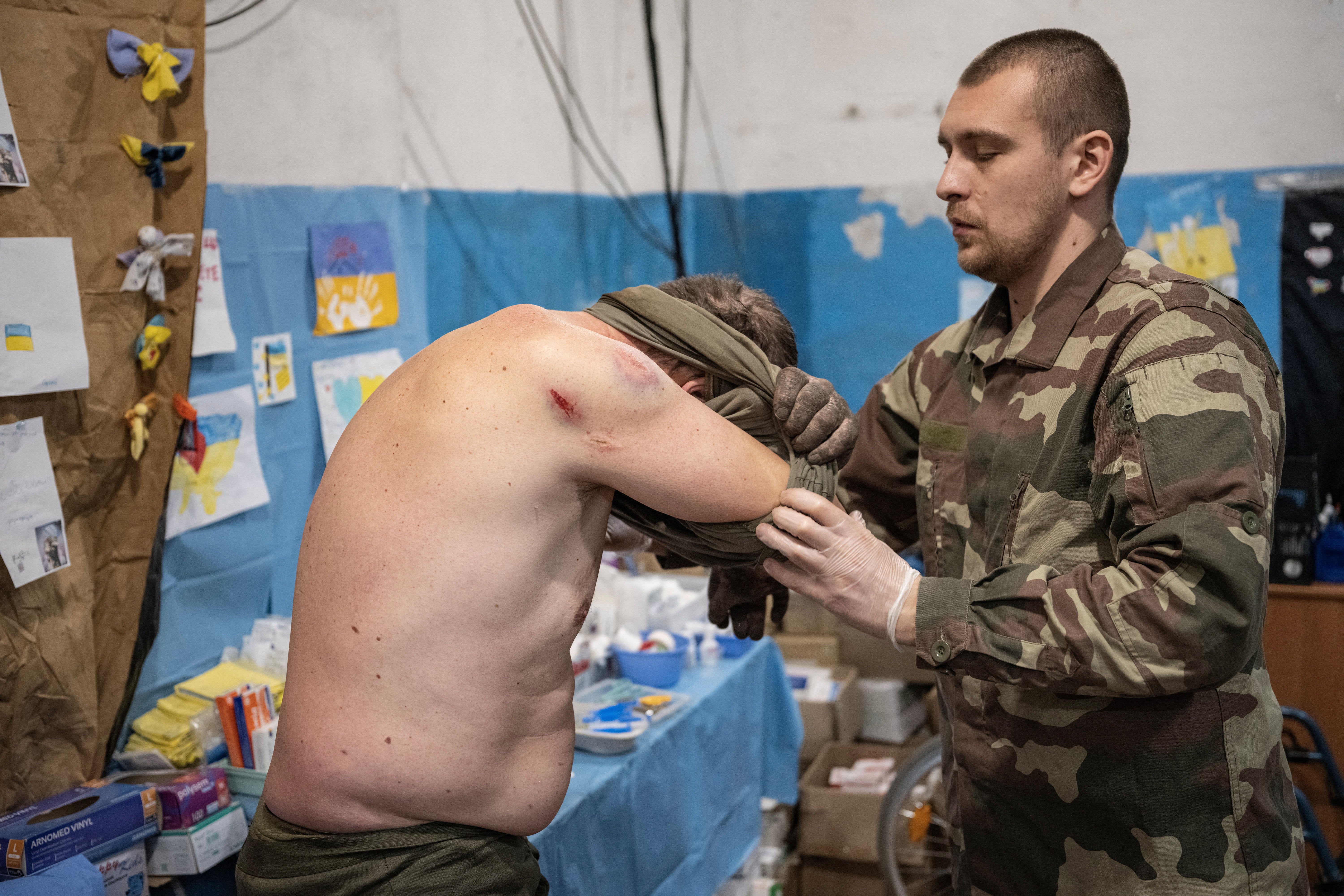
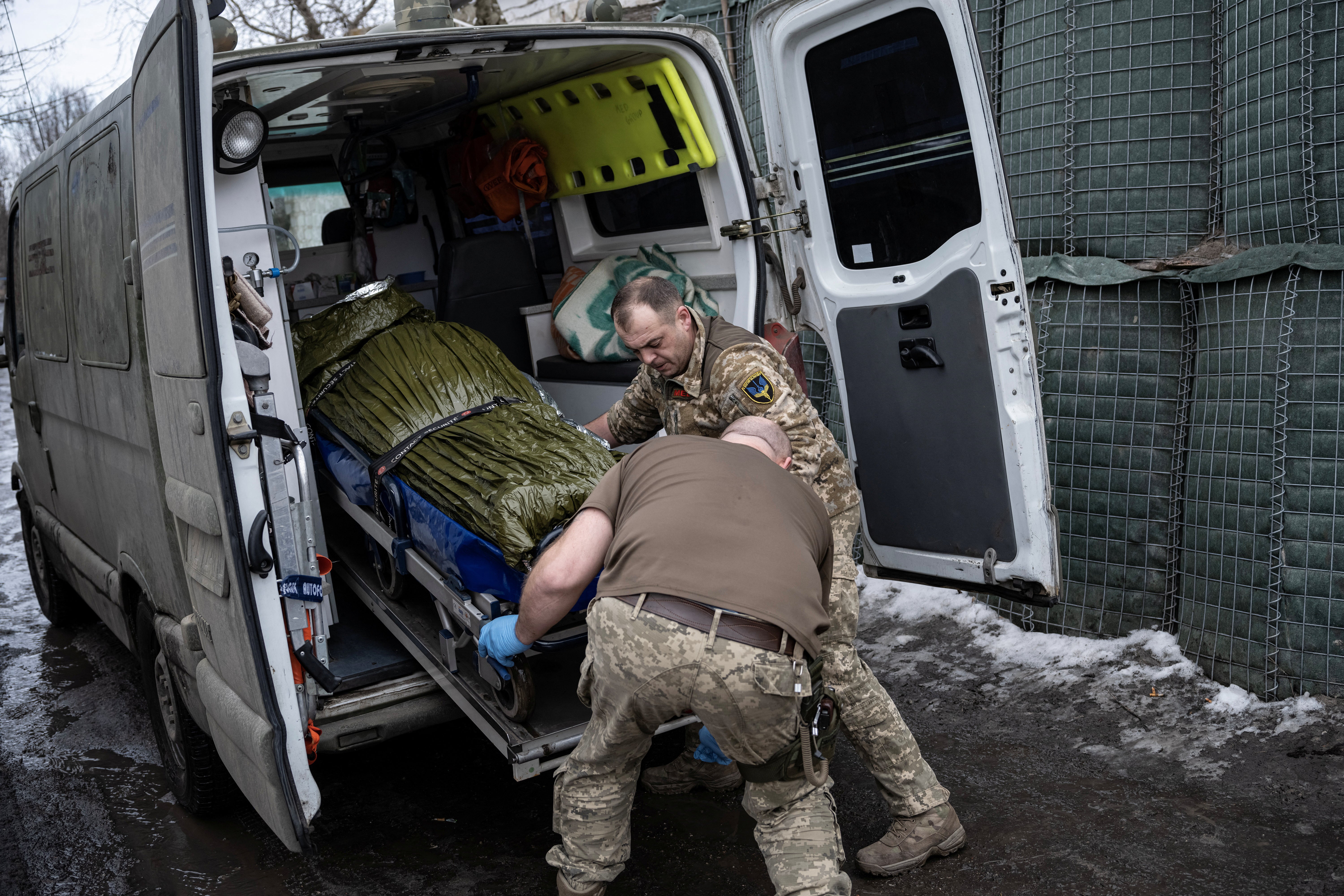
Evacuating soldiers from the frontline, via one of the team’s five drivers, usually takes between 20 and 40 minutes, but the wounded sometimes find themselves waiting up to two hours if fighting doesn’t let up.
That was the case on a recent day in late February, when soldiers Ruslan and Serhiy were brought in for treatment at the heavily sandbagged facility after being fired on by a Russian tank.
Neither had life-threatening injuries, though Ruslan’s right foot was mangled. Viktor’s team, which belongs to the 72nd Mechanized Brigade, believes he bore the brunt of the hit, helping ensure Serhiy walked away with only a broken arm.
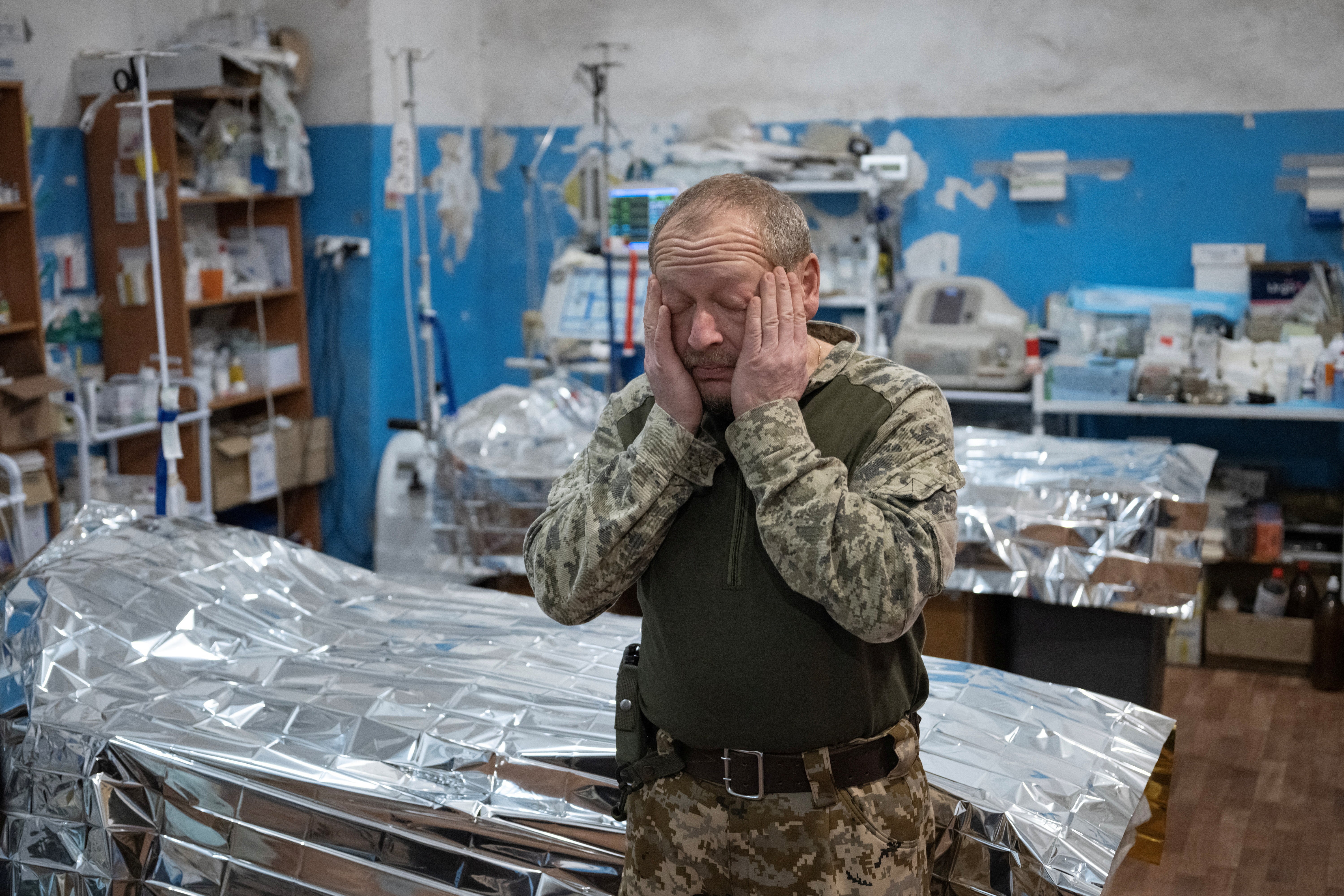
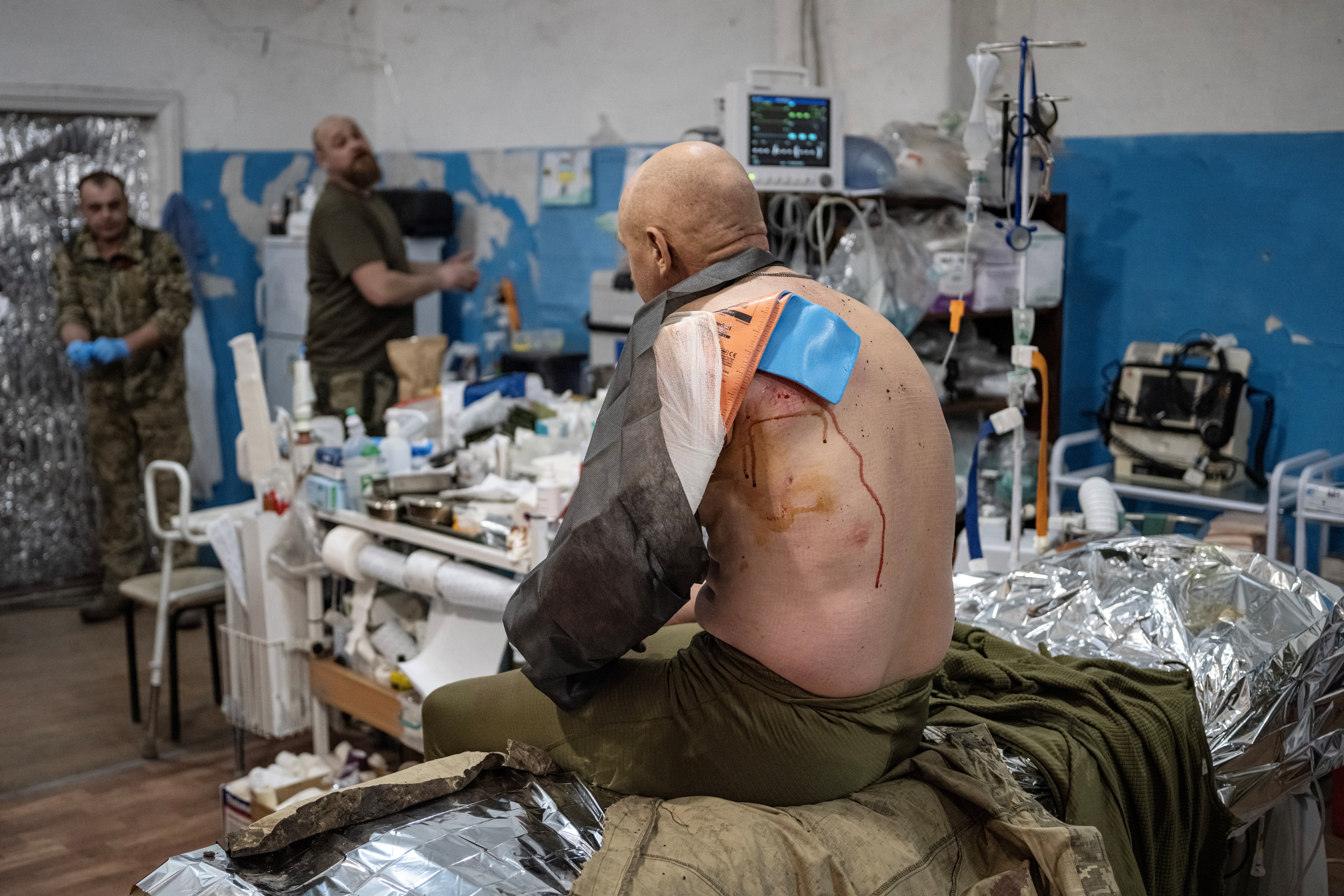
Adrenaline helps keep the medical team going and enables them to cope with the almost constant flow of wounded soldiers, including some Russians who are later exchanged for Ukrainian prisoners.
“This is our job,” said Viktor from inside their outpost, which is festooned with Ukrainian flags and drawings and thank you notes from children across the country.
“We know what we signed up for.”
Photography by Marko Djurica
Reuters
Join our commenting forum
Join thought-provoking conversations, follow other Independent readers and see their replies
Comments